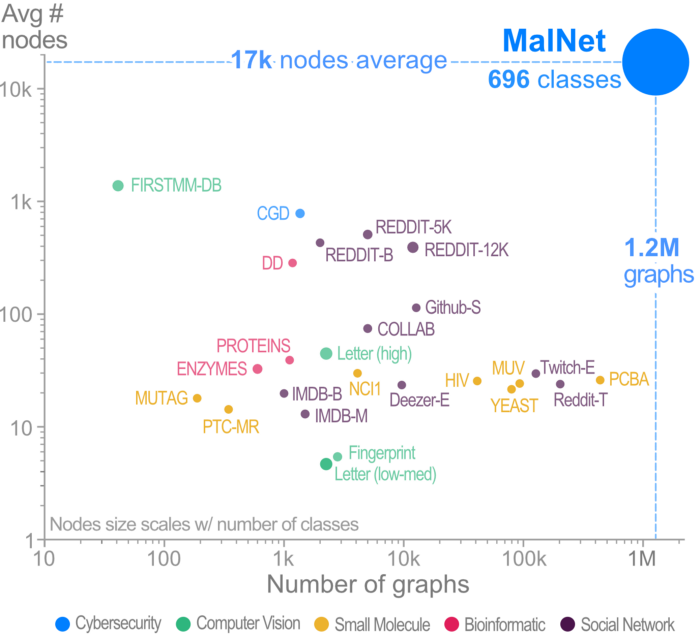A Large-Scale Database for Graph Representation Learning
With the rapid emergence of graph representation learning, the construction of new large-scale datasets is necessary to distinguish model capabilities and accurately assess the strengths and weaknesses of each technique. By carefully analyzing existing graph databases, we identify 3 critical components important for advancing the field of graph representation learning: (1) large graphs, (2) many graphs, and (3) class diversity. To date, no single graph database offers all these desired properties. We introduce MalNet, the largest public graph database ever constructed, representing a large-scale ontology of malicious software function call graphs. MalNet contains over 1.2 million graphs, averaging over 15k nodes and 35k edges per graph, across a hierarchy of 47 types and 696 families. Compared to the popular REDDIT-12K database, MalNet offers 105x more graphs, 39x larger graphs on average, and 63x more classes. We provide a detailed analysis of MalNet, discussing its properties and provenance, along with the evaluation of state-of-the-art machine learning and graph neural network techniques. The unprecedented scale and diversity of MalNet offers exciting opportunities to advance the frontiers of graph representation learning--enabling new discoveries and research into imbalanced classification, explainability and the impact of class hardness. The database is publicly available at www.mal-net.org.
PDF AbstractDatasets
Introduced in the Paper:
 MalNet
MalNet
Used in the Paper:
PROTEINS IMDB-BINARY MUTAG COLLAB NCI1 IMDB-MULTI ENZYMES REDDIT-BINARY REDDIT-5K REDDIT-12K AndroZoo
AndroZoo



